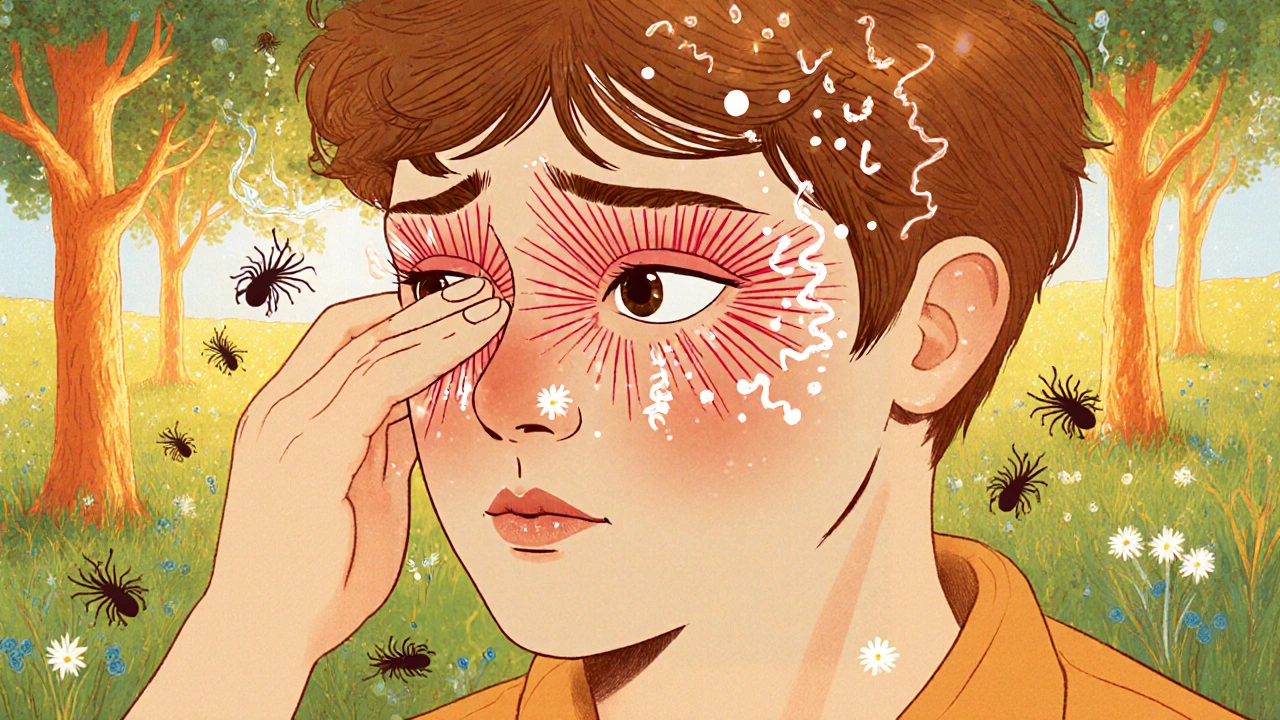Eye Irritation – Causes, Symptoms, and Treatment Options
When dealing with eye irritation, a uncomfortable feeling caused by inflammation, dryness, or foreign particles in the eye. Also known as ocular irritation, it can range from mild redness to painful burning. Most people notice it after a windy day, a dusty room, or a late‑night screen binge. The sensation often signals that something is irritating the delicate surface of the eye, and ignoring it can lead to deeper issues. Eye irritation isn’t a disease on its own; it’s a symptom that points to underlying triggers like allergies, infections, or environmental factors. Understanding those triggers lets you pick the right remedy fast, whether you need a soothing drop or a short course of medication.
Common Triggers and How to Identify Them
One frequent cause is conjunctivitis, inflammation of the thin membrane covering the white of the eye and inner eyelids. When conjunctivitis shows up, the eye becomes red, watery, and itchy—classic signs that overlap with simple irritation. Another big player is an allergic reaction; pollen, pet dander, or even certain eye makeup can set off histamine release, making the eye feel gritty and swollen. If you suspect a bacterial infection, the culprit is often a tiny invasion that needs more than a drop of water. In that case, an antibiotic eye ointment, a topical medication that kills or stops bacteria from multiplying may be prescribed. Knowing whether the problem is allergic, infectious, or purely mechanical helps you avoid the trial‑and‑error approach and get relief faster.
For most mild to moderate cases, the first line of defense is a proper antihistamine eye drop, a drop that blocks histamine receptors to calm itching and redness. These drops work quickly, usually within minutes, and are safe for daily use. If dryness is the main issue, lubricating drops—sometimes called artificial tears—add moisture and create a protective film on the eye surface. When a bacterial element is confirmed, doctors may add an antibiotic eye ointment to the regimen, because it penetrates the eye tissue better than drops alone. Proper hygiene, like washing hands before touching your eyes and cleaning contact lenses regularly, can stop many problems before they start. By matching the right product to the right cause, you cut down on discomfort and keep your vision clear.
Below you’ll find a curated list of articles that dive deeper into specific drugs, compare treatment options, and give step‑by‑step advice for managing eye irritation in real life. Whether you’re looking for the best over‑the‑counter eye drops, need to understand when a prescription is necessary, or want tips on preventing future flare‑ups, the posts ahead cover it all. Browse the collection to equip yourself with practical, pharmacist‑approved information you can act on today.

Allergic Conjunctivitis Explained: Causes, Symptoms & Treatment Options
Learn what triggers allergic conjunctivitis, how to recognize its symptoms, and the most effective treatments-from eye drops to home remedies-for lasting relief.